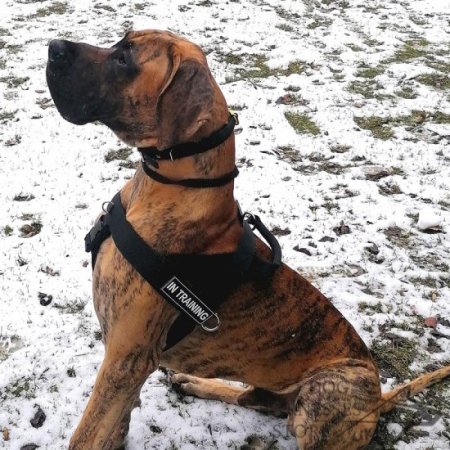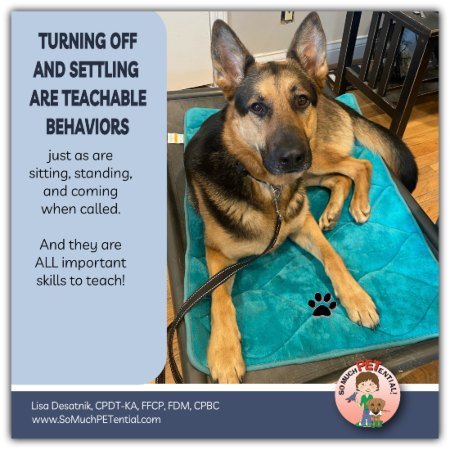From Sit to Stay: Achieve Your Dog's Training Dreams

Understanding Basic Dog Training Techniques
Basic Commands for Dog Training
In your journey to training your furry friend, starting with basic commands to build a solid foundation is essential. Commands like "sit," "stay," "come," "down," and "heel" are fundamental for effective dog training.
Remember, patience and consistency are key when teaching these commands. Celebrate small victories and stay optimistic throughout the process. Your dog will respond positively to your upbeat attitude and encouraging words.
Positive Reinforcement vs. Negative Reinforcement in Dog Training
When training your dog, positive reinforcement is the way to go. Encouraging good behaviour through rewards like treats, praise, or toys strengthens the bond between you and your pet. This method focuses on reinforcing desired behaviours rather than punishing unwanted ones. Avoid using negative reinforcement techniques, which can lead to fear and anxiety in your dog. Always approach training sessions positively and confidently, and watch your pup thrive in a supportive learning environment.
Remember, training your dog is a journey that requires time, dedication, and lots of love. Embrace each small success and believe in your ability to guide your dog towards becoming a well-behaved companion. You and your furry friend can achieve great things together with the right tools and a positive mindset. Continue to learn and grow as a team, and enjoy the rewarding experience of watching your dog flourish through training.

Advanced Training Techniques for Adult Dogs
Teaching Advanced Commands and Tricks
Now that your adorable adult dog has mastered the basics, it's time to take their training to the next level with advanced commands and tricks. Engage your furry companion with challenging tasks like "roll over," "play dead," or even "fetch the newspaper."
Keep training sessions exciting and rewarding to showcase your dog's intelligence and agility. With your encouragement and positive reinforcement, your adult dog will enjoy learning new skills and impressing everyone with their talents.
Addressing Behavioral Issues in Adult Dogs
If your adult dog exhibits any behavioural issues like jumping, barking excessively, or leash pulling, approach training with patience and understanding. Identify the root cause of the behaviour and work on positive reinforcement techniques to address and modify it.
For example, if your dog jumps on guests, practice ignoring them until they calm down and sit politely. Consistency and positive reinforcement will help your adult dog overcome any behavioural challenges and become a well-behaved companion.

Training Tools and Equipment for Effective Training
Types of Training Collars and Harnesses
In your journey of advancing your adult dog's training, utilizing the right training collars and harnesses can make a significant difference. Below is a comparison table of common training collars and harnesses:
| Collar/Harness Type | Description | Suitable for |
|---|---|---|
| Martingale Collar | Prevents escape and provides gentle correction | Dogs prone to slipping |
| Head Halter | Redirects attention and controls pulling | Dogs prone to pulling |
| Harness | Distributes pressure and prevents neck strain | Dogs with respiratory issues |
Remember, choose the collar or harness that fits your dog's size and training needs.
Interactive Toys and Treats for Positive Reinforcement
Engaging your adult dog in training activities with interactive toys and treats can enhance their learning experience. Consider the following comparison of interactive toys and treats for positive reinforcement:
| Toy/Treat | Description | Benefits |
|---|---|---|
| Puzzle Toys | Stimulates mental activity | Prevents boredom |
| Treat Dispensers | Rewards for correct behaviour | Encourages task completion |
| Freeze-Dried Treats | High-value reward for special tasks | Increases motivation |
By incorporating these interactive tools and treats into your training sessions, you can make learning fun and motivating for your adult dog.

Training for Specific Purposes: Service Dogs and Therapy Dogs
Service Dog Training Requirements and Regulations
When embarking on the training journey for service dog purposes, understanding the specific requirements and regulations is vital. Here is a comparison point to highlight the different aspects:
| Aspect | Service Dogs | Therapy Dogs |
|---|---|---|
| Primary Role | Assist individuals with disabilities | Provide emotional support |
| Training Focus | Task-specific training | Behaviour and socialization training |
| Legal Rights | Protected by the Americans with Disabilities Act (ADA) | Dependent on individual facility policies |
Remember to adhere to the training guidelines and regulations to ensure the successful integration of your service or therapy dog in relevant settings.
Therapy Dog Certification and Training Process
Delving into the training process for therapy dogs involves a structured approach towards certification and training. Compare the key points below to gain a better understanding:
| Criteria | Therapy Dogs | Service Dogs |
|---|---|---|
| Evaluation | Temperament and behaviour assessment | Task performance evaluation |
| Training Focus | Interactions with various individuals | Specific task execution |
| Setting | Can visit hospitals, schools, and other facilities | Accompany owner in public spaces |
Embrace the therapy dog training process with dedication and patience to achieve successful certification and enriching interactions.

Training for Canine Sports and Competitions
Agility Training for Dog Sports
When you delve into the world of canine sports and competitions, agility training becomes a crucial aspect of preparing your furry companion for the challenges ahead. Here's a comparison to highlight key differences:
| Aspect | Canine Agility | Competitive Obedience |
|---|---|---|
| Focus | Speed, agility, and obstacle courses | Precision, heeling, and commands |
| Training Approach | Fast-paced and dynamic training sessions | Structured and disciplined training routines |
| Competition Environment | Outdoor arenas with varied obstacles | Indoor obedience rings with specific rules |
Embrace the agility training process with enthusiasm and positivity to witness your dog's skills shine in competitive settings.
Obedience Training for Dog Competitions
In the realm of dog competitions, obedience training plays a vital role in honing your canine companion's skills and behaviour. Explore the key points below for a better understanding:
| Criteria | Obedience Training | Canine Sports |
|---|---|---|
| Commands | Heel, sit, stay, come, etc. | Combination of verbal and non-verbal cues |
| Focus | Listening and responding promptly | Executing tasks accurately under pressure |
| Scoring | Accuracy in following commands | Speed and precision in completing courses |
Nurture a strong bond with your dog through obedience training, fostering teamwork and success in competitive endeavors.

Training for Behavioral Modification
Understanding Dog Psychology and Behavior Modification
As you embark on training for behavioural modification with your canine companion, it's essential to delve into the intricacies of dog psychology.
Let's explore some effective training methods to address behavioural issues:
Training Methods for Dealing with Aggression and Anxiety
When it comes to handling aggression and anxiety in dogs, adopting the right training methods is key to promoting positive behavior.
Here are some approaches to help you navigate through challenging situations:
Our journey begins by understanding the emotions that drive behavior in dogs. Through patience, consistency, and positive reinforcement, you can reshape unwanted behaviours and foster a harmonious relationship with your furry friend.
In dealing with aggression, prioritize creating a safe environment for your dog. Utilize desensitization techniques, gradual exposure, and reward-based training to help your pet overcome triggers and react calmly to stressful situations.
For dogs experiencing anxiety, establish routines and provide a secure space for comfort. Implement calming techniques, such as deep pressure therapy or soothing music, to alleviate stress and build confidence.
Remember, every milestone achieved in behaviour modification is a testament to the bond you share with your four-legged companion. Stay dedicated, stay positive, and witness the transformation as you guide your dog towards a happier and more balanced life.
Celebrating Success: Recognizing Your Dog's Progress
Tracking Training Progress and Milestones
As we continue the journey of behavioural modification training with our furry companions, it's crucial to track progress and celebrate each milestone achieved.
By monitoring your dog's development, you can tailor training methods to suit their needs and pace, ensuring a positive and effective learning experience.
Rewarding Your Dog for Achievements
Rewarding your dog for their achievements plays a pivotal role in reinforcing positive behaviour and fostering a strong bond between you and your pet.
Whether it's a tasty treat, a favourite toy, or a moment of playtime, acknowledging your dog's efforts encourages them to continue working towards behavioural improvement.
Reflecting on the progress made in addressing behavioural issues such as aggression and anxiety, take pride in the steps taken to create a harmonious environment for your canine companion. By staying committed to training, utilizing effective methods, and recognizing your dog's achievements, you pave the way for a brighter future filled with mutual understanding and trust.

